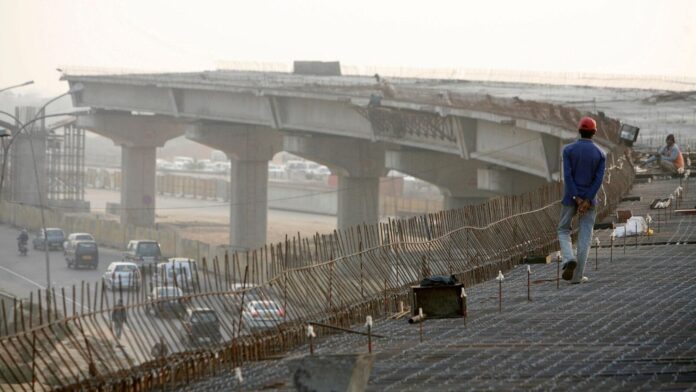At the heart of this tension lies the distinction between revenue and capital expenditure, a divide central to the ongoing freebies debate. Revenue outlays—spending on salaries, subsidies and day-to-day administration—can meet immediate needs and provide short-term political dividends.
However, excessive reliance on such outlays risks inflating deficits without creating lasting value. Freebies may offer momentary relief but often come at the expense of growth-enhancing capital investments.
This is why the case for prioritizing capital expenditure is compelling. Capital outlays fund the creation of assets that not only bolster productivity, but also generate long-term fiscal dividends by expanding the tax base. The multiplier effect of capital expenditure is well-documented; every rupee spent can stimulate demand across sectors, create jobs and attract private investment.
A 2013 study by Sukanya Bose and N.R. Bhanumurthy shows that capex has the highest impact on economic growth, with a fiscal multiplier of 2.45, compared to 0.98 for transfer payments and 0.99 for other expenditures.
Similarly, a 2024 Reserve Bank of India analysis highlights that while revenue expenditure multipliers are short-lived and average 1.43, capex has a significantly higher impact with a peak multiplier of 3.84 over three years.
Ultimately, neither an overbearing ‘Leviathan’ nor a shrunken ‘Lilliput’ model serves India’s growth aspirations. As Thomas Sowell wryly reminds us, “The first lesson of economics is scarcity… The first lesson of politics is to disregard the first lesson of economics.”
Political promises and economic realities often collide, but this collision can be creatively harnessed if states direct revenue savings toward impactful capital projects rather than freebies. The goal is not to slash essential welfare but to align short-term obligations with long-term developmental strategies—helping infrastructure, education and healthcare systems flourish.
But how are states performing on this metric? RBI has recently published a State Finances Report, looking at fiscal reforms by states. According to the report, in 2023-24, states kept their gross fiscal deficit (GFD) at 2.91% of GDP, within the 3% limit set by India’s fiscal responsibility law.
In 2023-24 (revised estimates), the states with the highest GFDs (excluding northeastern states) were Bihar (8.9%), Chhattisgarh (7.3%), Himachal Pradesh (6.1%), Andhra Pradesh (4.4%), Rajasthan (4.3%) and Punjab (4.1%).
Capital outlays have improved, rising to 2.6% of GDP from 2.2% in 2022-23. For 2024-25, states aim to maintain fiscal discipline with a budgeted GFD of 3.2% of GDP, while further enhancing expenditure quality.
States have significantly altered their expenditure patterns, with revenue expenditure as a percentage of GDP declining to 13.5% in 2023-24, nearing pre-pandemic levels. Developmental spending in areas such as healthcare and agriculture has tapered off post-pandemic, while allocations for housing and social security have risen.
Capex rose to 2.8% of GDP in 2023-24, driven by higher tax devolution and interest-free loans from the Centre. States like Gujarat have demonstrated fiscal prudence by maintaining a balanced approach between revenue and capital expenditures.
The revenue expenditure to capital outlay (RECO) ratio has improved, falling from 6.3 in 2021-22 to 5.2 in 2024-25. Gujarat stands out with a RECO ratio of around 3.5, a healthy balance favouring growth-oriented capital investments. However, disparities persist, with states like Punjab exceeding a RECO ratio of 17, reflecting disproportionate revenue spending. Maharashtra and Tamil Nadu have improved.
Yet, regional disparities in expenditure patterns persist. States like Bihar and Jharkhand continue to allocate a disproportionate share of their budgets to revenue expenditure.
States that are heavily reliant on central devolution—such as Bihar, 73% of whose resources are from the Centre—often avoid expenditure reforms or raising their own revenues. Bihar retains prohibition, which loses it tax revenue and reflects a reluctance to optimize fiscal resources.
Competitive populism at the state level poses a threat to the sustainability of India’s fiscal framework. State governments, driven by the pressures of electoral politics, seem in a race to outdo one another in offering freebies and subsidies. This dynamic creates a structural disincentive for fiscal prudence.
The federal structure of governance introduces a classic collective action dilemma, where states, operating under the principles of fiscal federalism, externalize the consequences of their budgetary indiscipline onto the Centre, a phenomenon that can be likened to Mancur Olson’s theory of “diffuse costs and concentrated benefits.”
States often claim inadequate fiscal devolution from the Union government (technically, it is the Union finance commission) to rationalize unsustainable spending patterns, deflecting accountability for reforms that would curtail politically expedient but economically inefficient expenditures. This, despite the avenues that exist for expenditure reforms.
The author is a public policy professional.
#spending #win #Indias #fiscal #tugofwar #state #level
